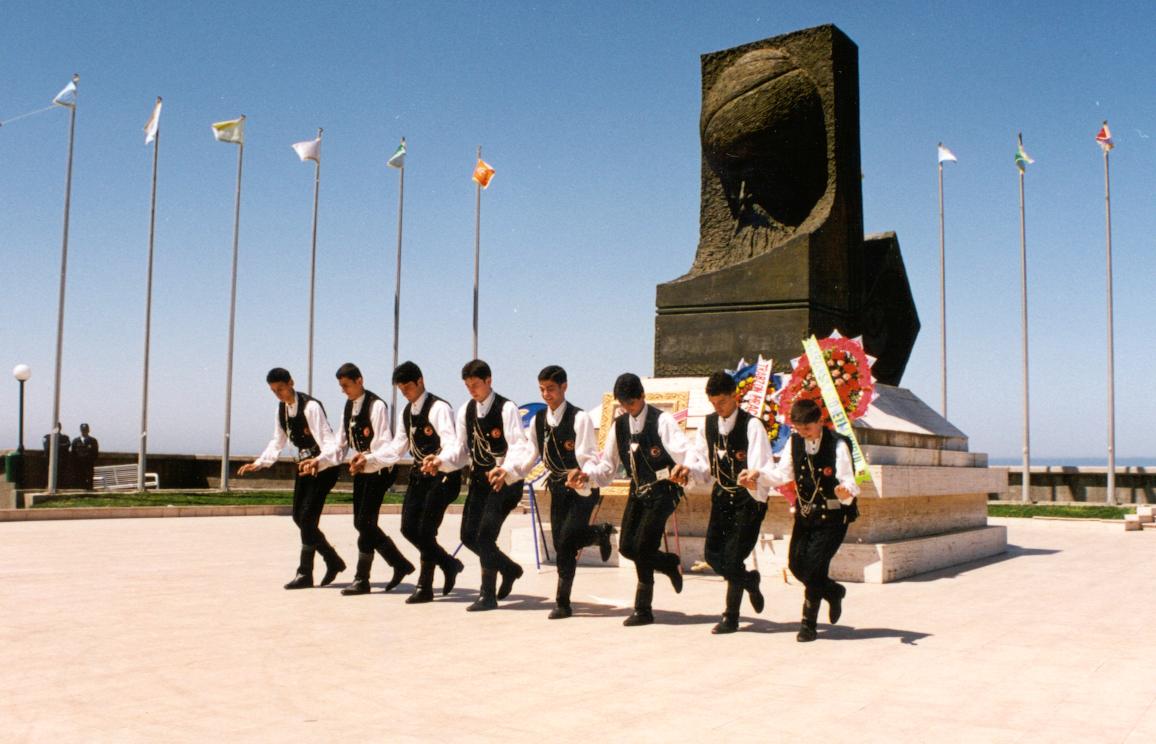Geography and Climate History of the City Culture Places To See How To Reach The City
Trabzon is a city of tradition. The folk dances of the region, known as the "Horon" are renowned, and are danced by men and women, young and old alike. The Horon is accompanied by traditional music played on a type of small violin with three stringscalled ‘kemençe’. It is often accompanied by drums, horns and shepherd's flutes. In Trabzon folklore, the mountain pasture festivals play an important role. In the mountains the mountain pastures, like a chain, entertains these festivals every year. The groups composed of men and women arrive in the mountain pastures with their cattle and sheep, and begin festivals by setting a big “şölen” (feast). Nearly everybody joins the horon, accompanied by kemençe. In these festivals, the women, wearing colourful regional clothes, and decorated animals are really worth seeing.



Trabzon is renowned for its traditional handicrafts, all made from natural materials available locally. Trabzon was one of the main copper mining centres of the Ottoman Empire, and was, and still is, famous for its copper cauldrons, ewers, bowls and buckets. In addition, agricultural and household tools made of iron, bracelet made by weaving silver threads (hasir bilezik), and the different decorative objects which are made of silver and are called «telkâri» are very popular. Wooden agricultural and household tools, kilims, peştemals (waist clothes), bags, colourful woollen socks and transportation ropes are worth seeing.In this heavily forested region, local people have always used wood as their main material for building. They also carve wooden furniture, tubs and churns for use in cheese making as well as many smaller items such as baskets and spoons.

Trabzon is also known for its local style of architecture. There are some historical sites worth visiting and seeing, such as ‘Ortahisar’ in Trabzon; ‘Orta Mahalle’ in Akçaabat; and others in Araklı and in Sürmene in the Eastern part of Trabzon where the historical tissue has been protected. The original architecture suits the climate and geographic features of the area. For instance the native or foreign travelers who came to the city in the past centuries, praise the mansions built within large yards, mosques erected with high elegance, and clean streets paved in special stones called ‘Albanian pavement’. The mansions built in wood or stone in the city centre are generally double floored. The walls overlooking the sea are laid in stone while the others are built in both wood and stone. The roofs are laid in tiles and their fringes are made large because of the rain fall. The inner parts of the houses are decorated in hand-crafted wood carving or woodworks which look very nice and seem to show higher craftsmanship. The yards of the mansions which are quite aesthetic and follow one another in sequence are very large, tidy, and decorated by various fruit and plants with ornaments.

